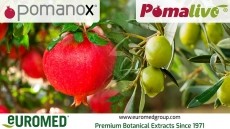Synbio ingredients have vast market penetration, new list shows
Jim Thomas is program director at the ETC Group, a non-profit organization based in Canada that tracks the effect of emerging technologies. The group has put together a database showing where ingredients produced via fermentation using modified organisms are turning up in the market. In the past the group has looked at a couple of well-publicized cases, such as the production of vanillin from modified organisms. In an interview at the Expo West trade show recently in Anaheim, CA, Thomas told NutraIngredients-USA that the full list was an eye-opener, in that substances that arise from this technology can now be found everywhere.
“We were talking with natural products companies and others who were concerned because they didn’t want to inadvertently be including these ingredients in their foods. We thought there would be a handful, but what surprised us was how widely these new ingredients are getting into new product categories. This is everything from cosmetics and cleaning products through to foods and flavors. Supplements obviously is a big area. We have now about 350 entries in the database and that’s just the beginning,” he said.
Vast potential market
Thomas said this technology, which is now gaining so much momentum, has flown mostly under the radar, at least as far as the labeling of these ingredients is concerned. The global market for these ingredients is expected to exceed $34 billion by 2020, he said.
The key point is that while the more familiar GM techniques are about modifying existing organisms, this new approach is really about the engineering of new life forms, Thomas said.
“Up to now genetic engineering has been something of an asrtisanal process. Synthetic biology is ‘real engineering’ according to the practitioners,” Thomas said.
New forms of life
The underlying technology is a new, rapid and inexpensive printing technique that can spit out strings of DNA with specific amino acid sequences that can then be inserted into specific spots on a DNA strand in an algal or yeast cell, for example. Rather than snipping DNA portions that pertain to certain traits from one organism and moving that to another, as in the more familiar genetic engineering, synthetic biology can create new traits from whole cloth, Thomas said. The result, when incorporated into an algal or yeast DNA strand, gives rise to an entirely new organism that will secrete the things you are looking for, he said.
Undercutting botanical ingredients
At a meeting in Baltimore in 2015, Thomas used vanilla as a case study in how this technology is finding traction in the marketplace. Artificial vanillin has been on the market for many years, and is labeled as such. Consumers who value the flavor of natural vanilla can find it on labels and choose to pay for it. But a loophole in federal law allows vanillin (the active constituent of vanilla flavor) produced via synthetic biology to come to market under a ‘natural’ banner. According to FDA, a natural flavor can arise from a long list of products and processes. At the end of that list there is included the following phrase: “or fermentation products thereof.” No one argues that fermented soy, for example, is not a natural flavor. But what if the fermenting organism didn’t come from nature, but came from a biotech lab? Thomas said the new database, which was a challenge to develop because some in the field would prefer not to advertise where these ingredients are being employed, will help brand holders and consumers make that choice for themselves.










